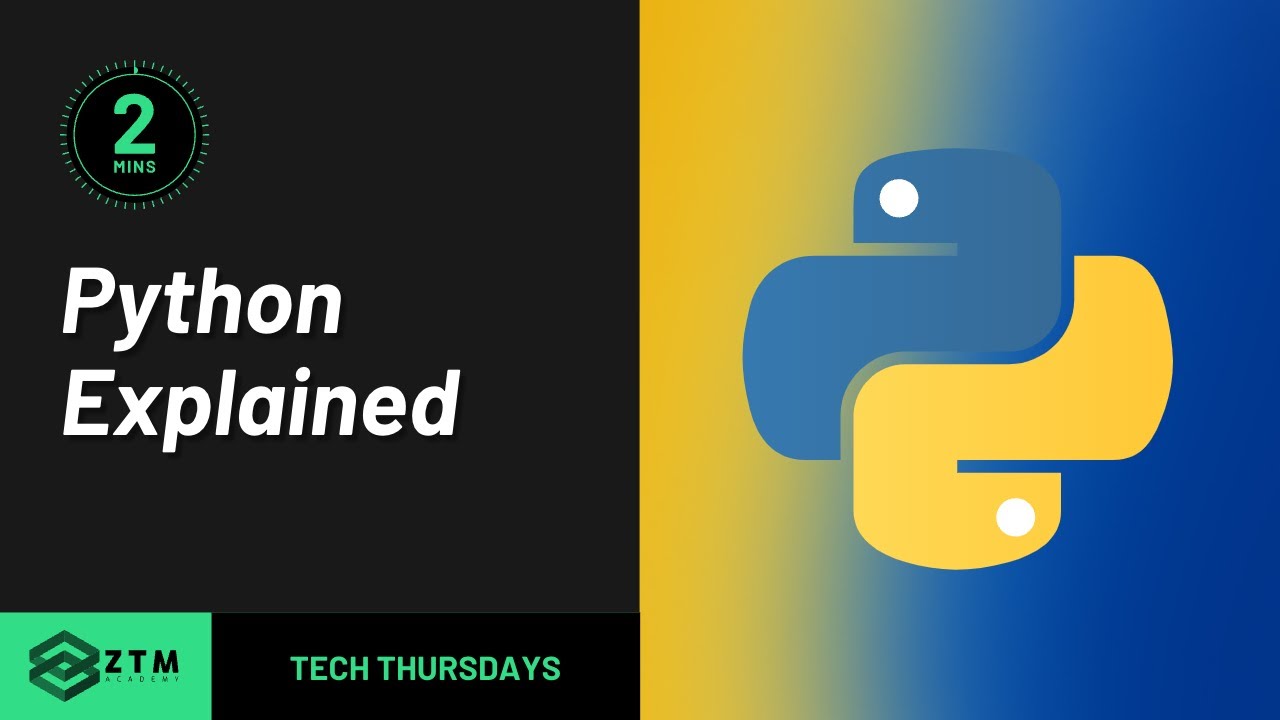Guido van Rossum: The TRUE History Behind The Python Programming Language
Summary
TLDRThis video explores the history of Python, from its inception during a 1989 Christmas holiday by Guido van Rossum to its current status as a leading programming language. Initially designed to improve upon ABC, Python offered increased readability and efficiency over C. Its open-source journey began with a split source code release on Usenet, evolving through versions to include features like exception handling and Unicode support. Python's rise in popularity is attributed to its simplicity, extensive libraries, and applicability in fields like big data and machine learning. Today, Python competes with top languages and has a dedicated community known as 'pythonistas'.
Takeaways
- 🌟 Python's popularity is highlighted by its frequent mentions in Google searches, surpassing even celebrities like Kim Kardashian and Donald Trump.
- 🎄 Python was initially developed by Guido van Rossum during the Christmas holidays in 1989 as a project to create a new programming language.
- 🐍 The name 'Python' was inspired by the British comedy group Monty Python and was chosen for its edgy, mysterious, and one-breath pronunciation.
- 🔍 Python was designed to be more readable and programmer-friendly compared to C, aiming to offer a shorter development time and better appeal to Unix and C hackers.
- 📚 Python's early versions, starting from 0.9.0, included features like exception handling, functions, modules, classes, and core data types like list, dict, and str.
- 🌐 Python's open-source nature was a strategic decision in the 90s, which involved breaking the source code into 21 parts to share on Usenet.
- 📈 Python 1.0 introduced functional programming tools, keyword arguments, and support for complex numbers, marking a significant step in its evolution.
- 🏆 The National Institute for Standards and Technology's adoption of Python for standards-related projects in 1994 helped to further popularize the language.
- 🚀 Python 2.0, released in 2000, featured Unicode support, a full garbage collector, and list comprehensions, enhancing its capabilities.
- 🔄 The transition to Python 3.0 was challenging due to compatibility issues with third-party libraries, but it was necessary for the language's long-term health.
- 🌐 Python's current success is attributed to its adaptability in big data and machine learning, as well as its simplicity, which attracts new developers.
Q & A
What is the most exciting fact mentioned about Python's popularity?
-Python was searched more times on Google than Kim Kardashian and Donald Trump.
When was Python initially developed?
-Python was initially developed during a Christmas holiday in 1989.
Who is the creator of Python?
-Guido van Rossum is the creator of Python.
What was the original purpose of Python's development?
-Python was developed to be a language that was more readable, programmable, and faster to use than C, and to appeal to hackers in Unix and C languages.
Why was Python named as such?
-The name Python was taken from the BBC TV show Monty Python's Flying Circus, as van Rossum was a fan and wanted a name that sounded edgy, mysterious, and could be spoken in one breath.
What was the dilemma Guido van Rossum faced regarding Python's distribution?
-Guido van Rossum faced the dilemma of deciding whether to make Python open source or not, as the business model for language developers at the time was inconclusive.
What was the first version of Python released, and what features did it include?
-The first version of Python released was 0.9.0, which included features like exception handling, functions, modules, classes, and core data types like list, dict, and str.
What significant event happened in 1994 for Python?
-In 1994, Python 1.0 was released, and the National Institute for Standards and Technology selected Python for use in standards-related projects.
What is the 'Zen of Python' and when was it introduced?
-The 'Zen of Python' is a set of 20 aphorisms that guide Python's design philosophy. It was introduced when Python 2.0 was released in 2000.
What was the major challenge with the release of Python 3.0?
-The major challenge with the release of Python 3.0 was that it was not fully backward compatible, causing issues for users relying on third-party libraries that were slower to upgrade.
What is the latest version of Python mentioned in the script, and what is one of its improvements?
-The latest version of Python mentioned in the script is 3.11.0, which is up to 60% faster than the older 3.10 version.
What factors have contributed to Python's surge in popularity?
-Python's surge in popularity has been attributed to the development of interest in big data and machine learning, as well as its simplicity and straightforwardness for new developers.
Outlines

هذا القسم متوفر فقط للمشتركين. يرجى الترقية للوصول إلى هذه الميزة.
قم بالترقية الآنMindmap

هذا القسم متوفر فقط للمشتركين. يرجى الترقية للوصول إلى هذه الميزة.
قم بالترقية الآنKeywords

هذا القسم متوفر فقط للمشتركين. يرجى الترقية للوصول إلى هذه الميزة.
قم بالترقية الآنHighlights

هذا القسم متوفر فقط للمشتركين. يرجى الترقية للوصول إلى هذه الميزة.
قم بالترقية الآنTranscripts

هذا القسم متوفر فقط للمشتركين. يرجى الترقية للوصول إلى هذه الميزة.
قم بالترقية الآنتصفح المزيد من مقاطع الفيديو ذات الصلة
5.0 / 5 (0 votes)






